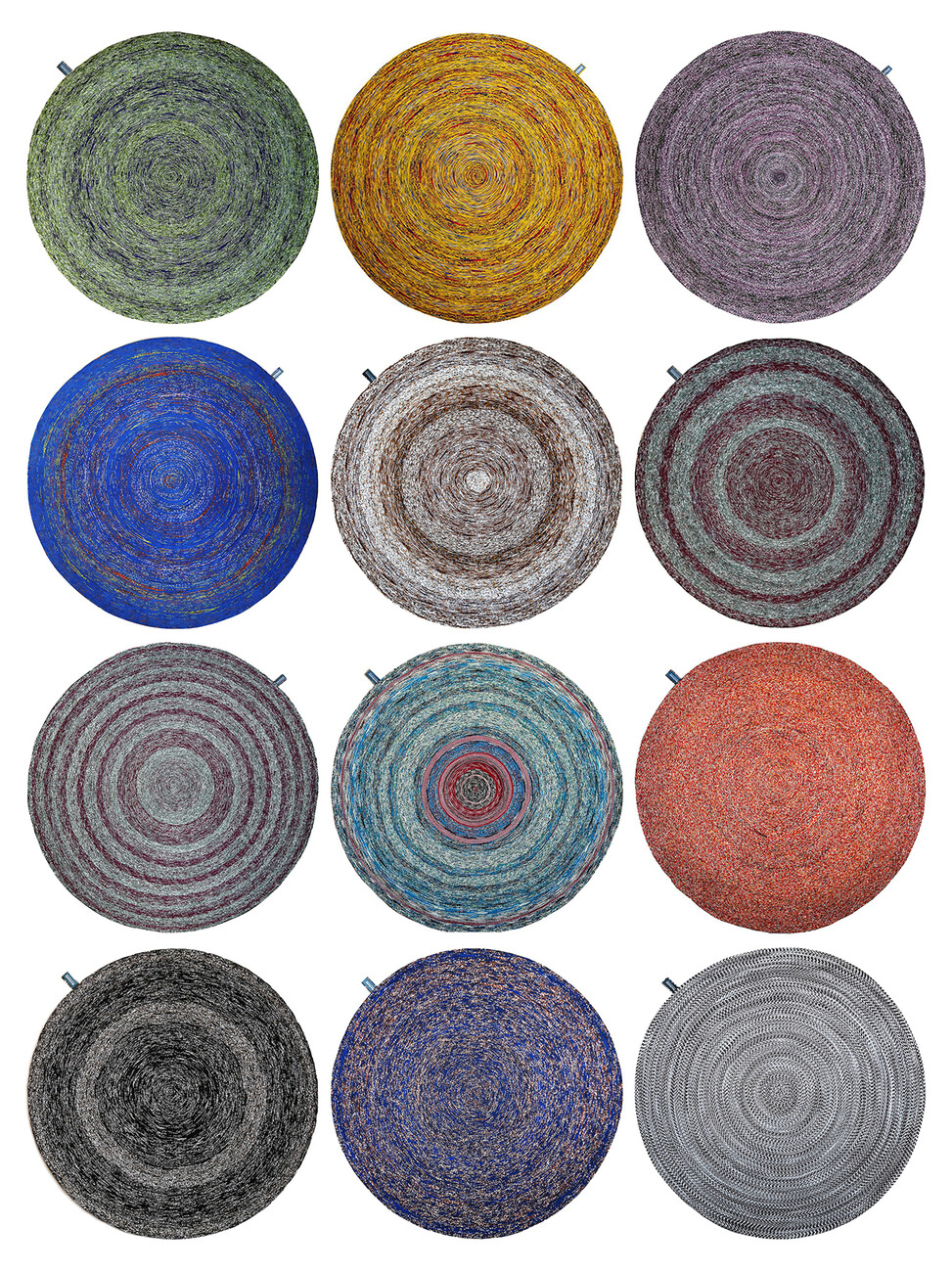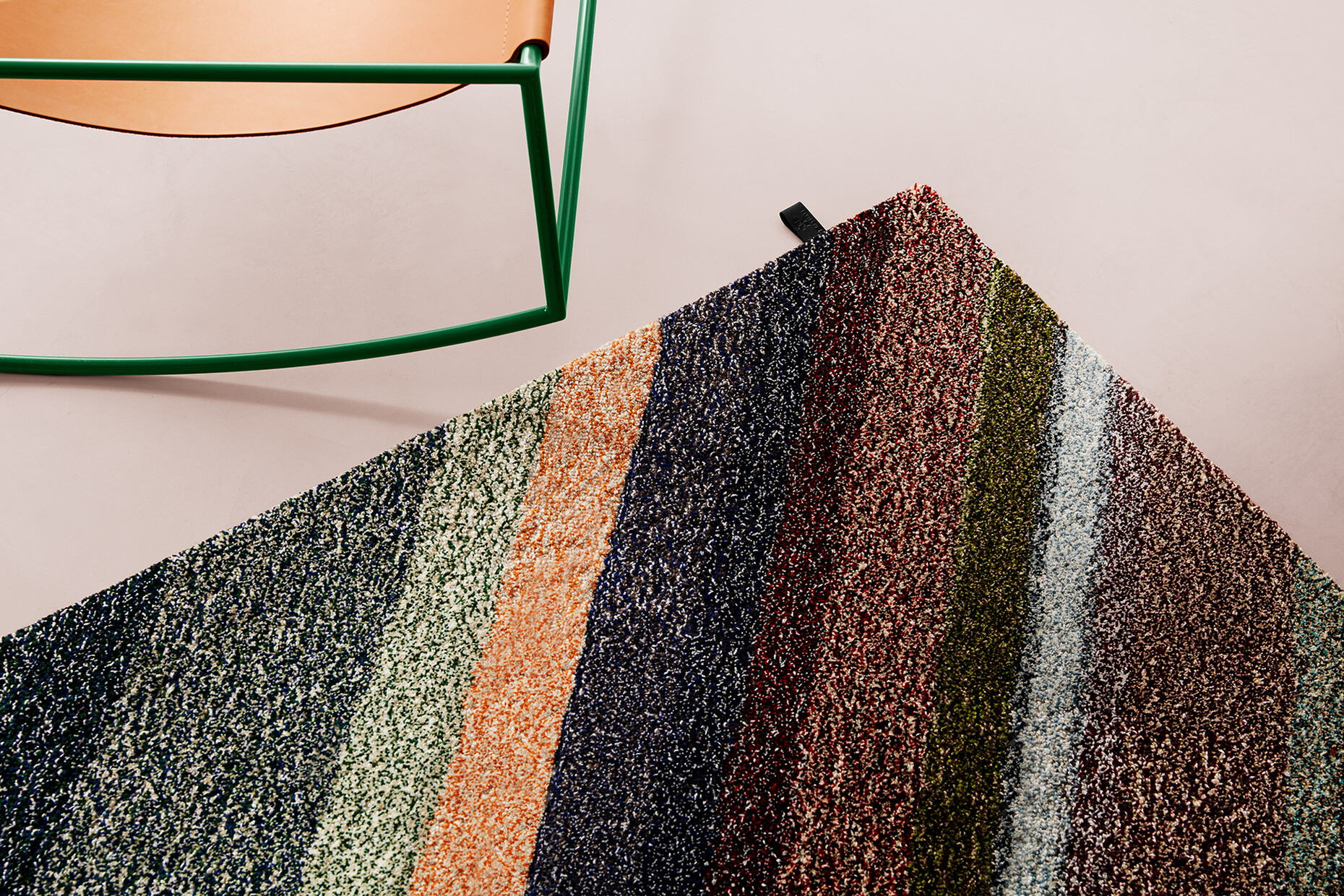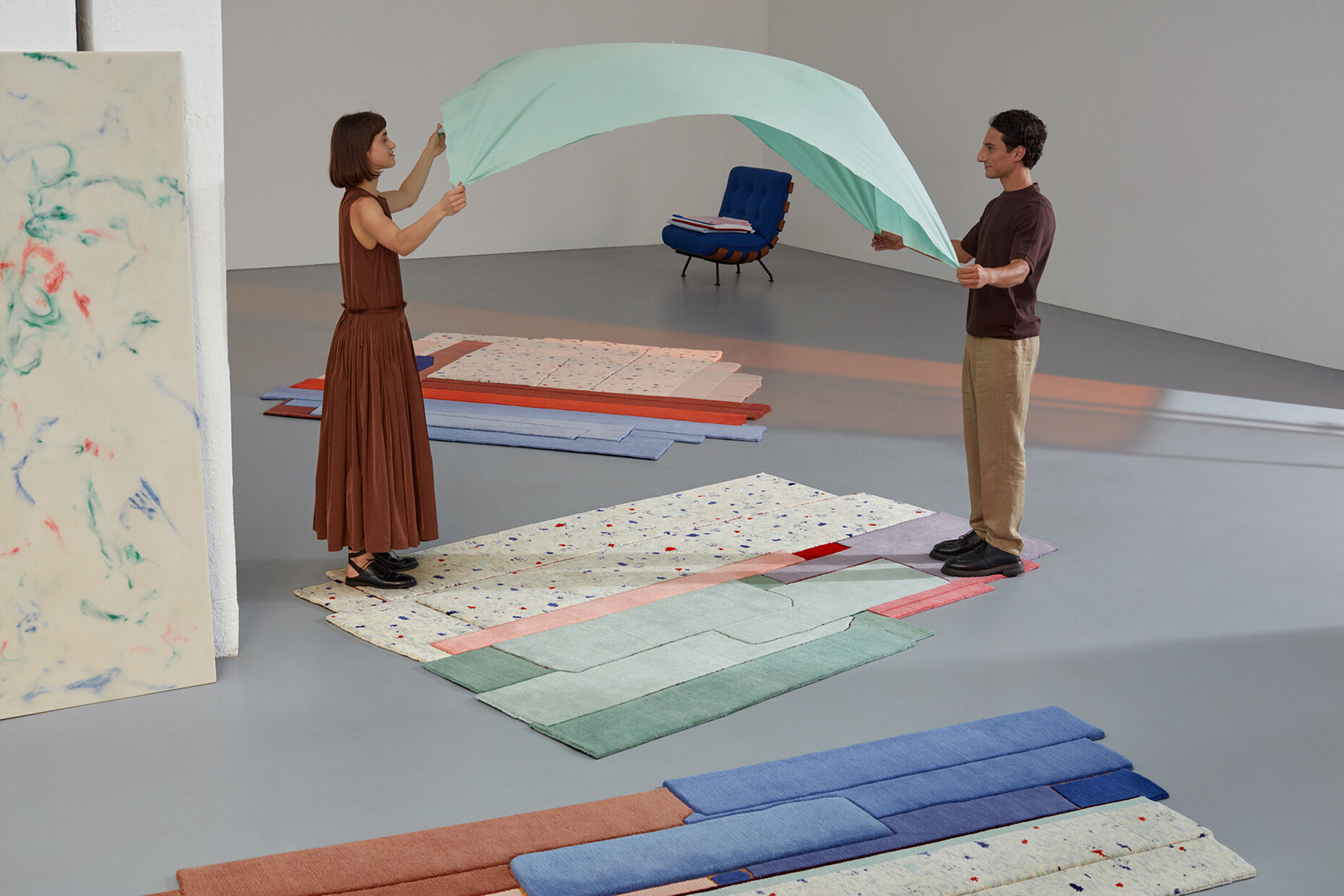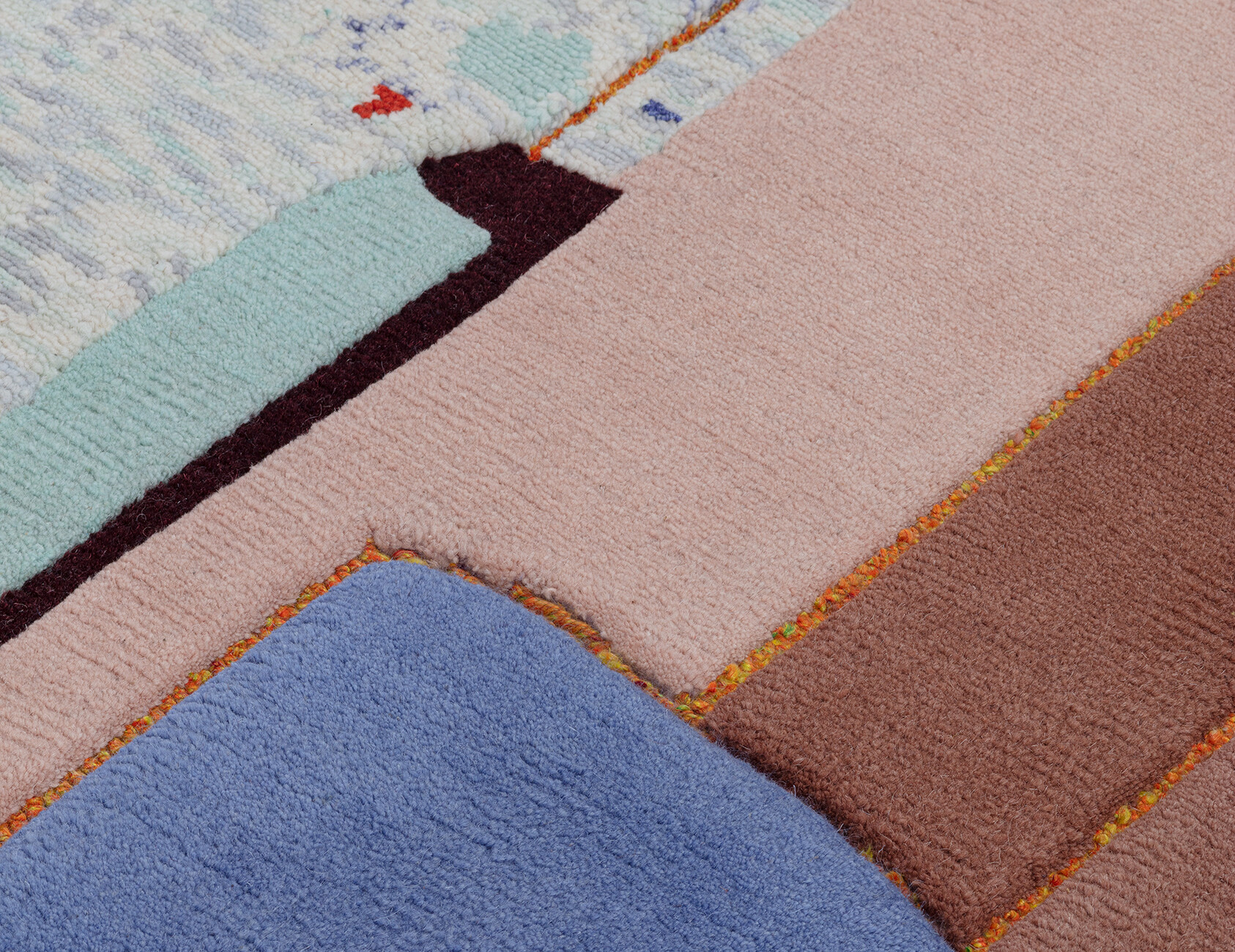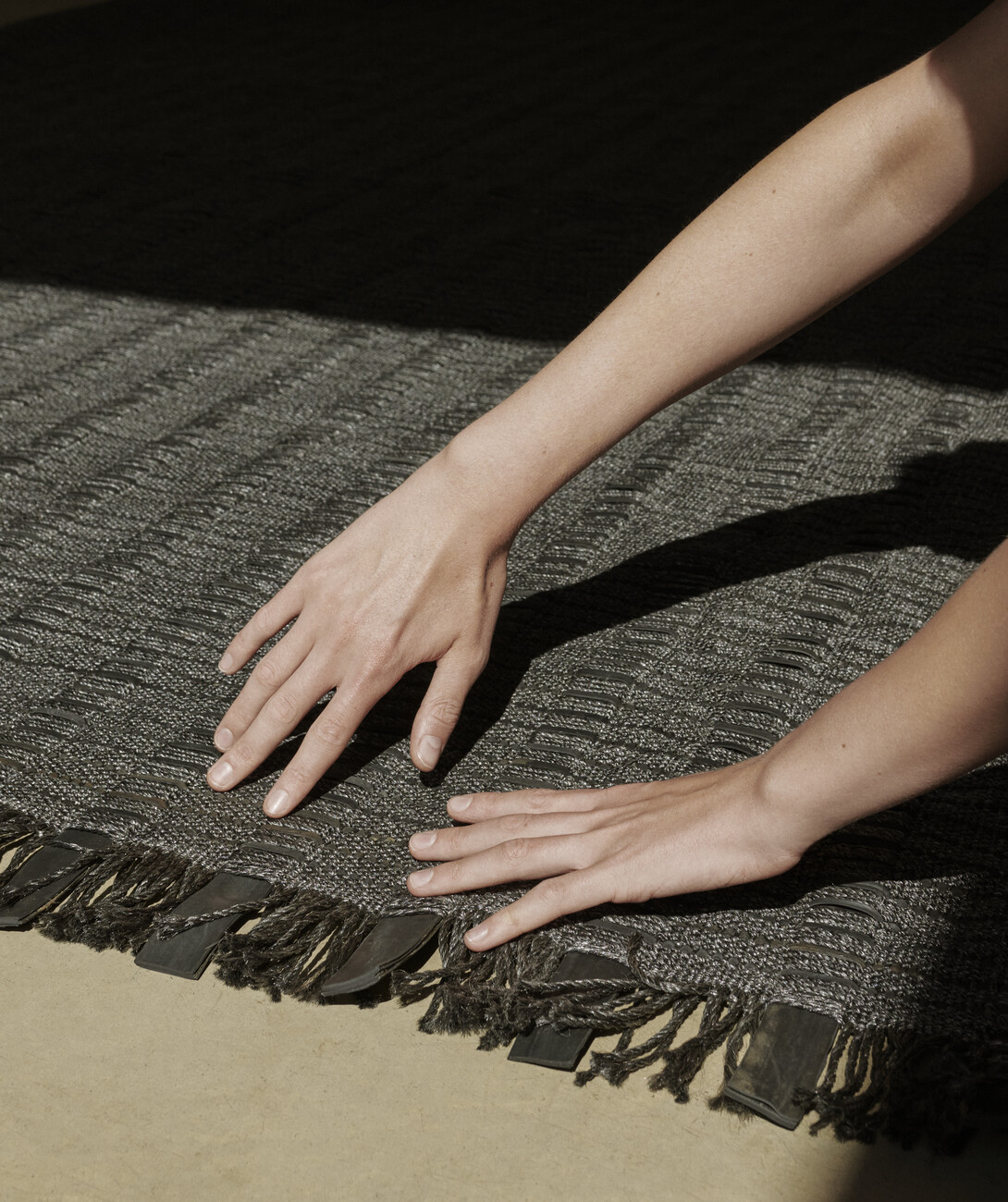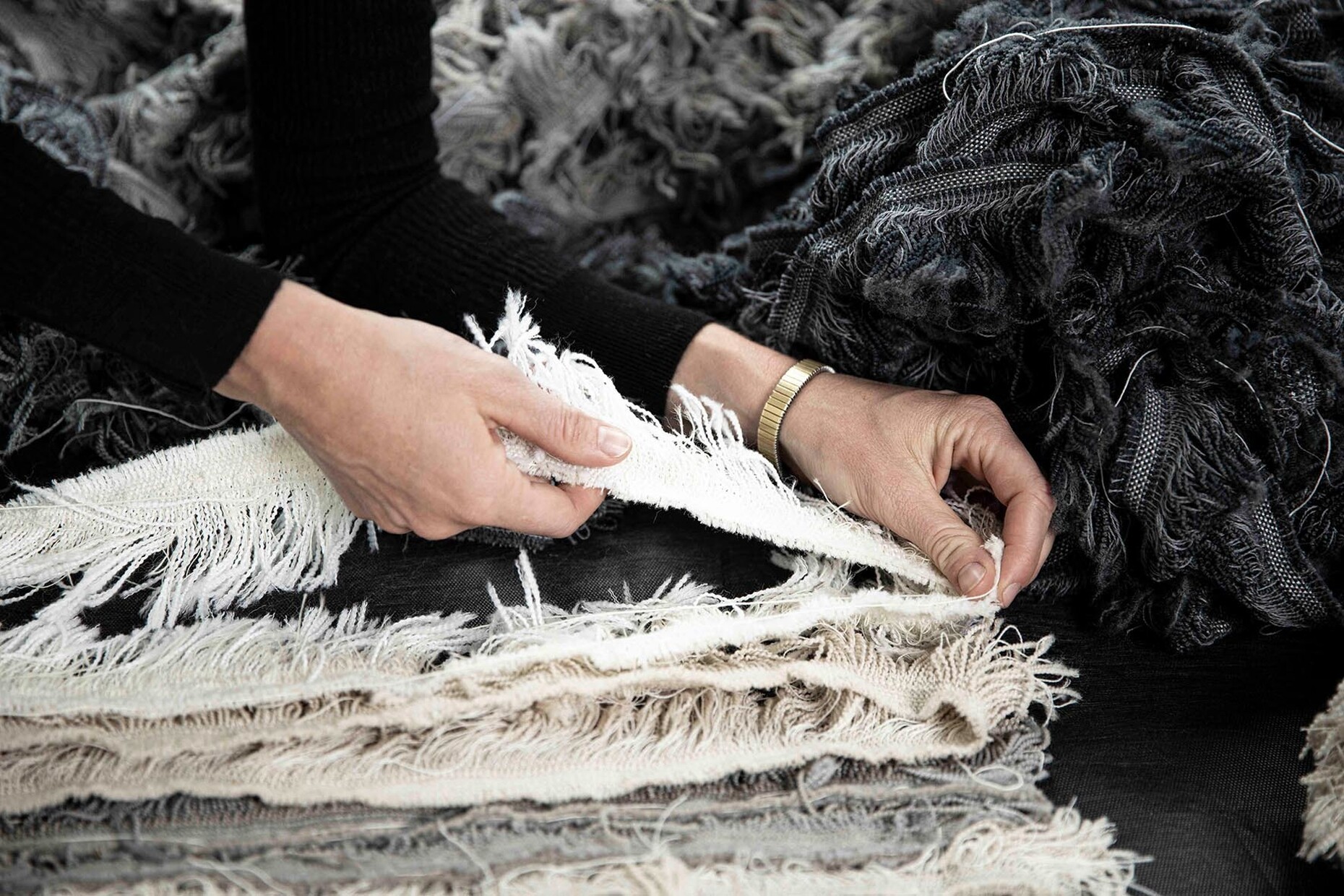Sustainability
Upgrading flooring
“I dislike the word waste,” says Simone Post. “We should regard every material, and that includes waste, as a new source of material.” The Dutch expert demonstrated what she meant with her graduation project at the Design Academy Eindhoven: She developed an upcycling concept for offcuts of material that she then fashions into circular rugs. The leftovers and rejects come from the production lines at textile manufacturer Vlisco, a company known for its highly colorful and extravagantly patterned fabrics made using a complex wax technique. “The big difference between upcycling and recycling is that with upcycling as part of the circular economy the material is imbued with greater value,” says the designer. By contrast, recycling might mean that a fabric involving a complex manufacturing process is later only used to make insulating boards.
Simone Post is not alone in adopting a sustainable approach to waste: A good number of manufacturers and brands – among them the likes of 13Rugs, Nomad, Kasthall, Kinnasand or nanimarquina – now feature rugs made from leftover or waste materials in their program. There are rugs from yarn leftovers or leather waste, from bicycle tubes or sweet wrappings. Evidently, when it comes to creating something new from supposed waste decorative floor coverings are a particularly good option. However, these upcycling products have little in common with the coarse rag rugs we are familiar with from Sweden or the Alpine region. For several years, for example, Rohi a weaving mill in southern Bavaria has been using wool selvages from production to make fine felted wool rugs. A lot of manual work goes into the pieces marketed under the label “13Rugs”: The selvages have to be sorted, flattened and fixed. The felting is then undertaken by a needle loom machine that the company specially adapted for the purpose. Every year, 50 to 70 unique rugs are created using this method, for which around 10 to 20 percent of the selvages from rohi production are used. “Upcycling is certainly a way of approaching the notion of sustainability in contemporary production chains somewhat differently,” comments rohi’s Tina Wendler, who teamed up with designer Lara Wernert to develop the concept behind 13Rugs. “A new design philosophy with a holistic approach anchored in a traditional firm, demonstrates sustainable action.” Moreover, the fluffy felted rugs are largely a regional product: Admittedly, the actual wool comes from South America, but Rohi in southern Bavaria is the site for all the stages of design and production.
The situation is similar at Nomad, the textile brand launched by designer Jutta Werner: Although the native of Hamburg has her upcycling rugs woven in far-away India the industrial leftovers all come from the direct vicinity of the weaving mill. For example, the “Rubber Rug” is fashioned from old bicycle inner tubes cut into strips. By contrast, for “Coco Rug” Werner relies on fur and leather waste from textile production which makes the rugs particularly soft. The third model of the recently presented collection brings together two very different ingredients: For the “Candy Wrapper Rug” new wool is woven with shiny foil sweet paper to create a contrast that is as effective as it is unusual. But the upcycling does not stop there; Jutta Werner is currently working with the weaving mill to develop additional models. That said, this process can be a lengthy one, for the Candy Wrapper Rug two years lapsed between the initial idea and having the rug ready for mass production. “What looks simple might not necessarily be easy,” says the designer. At the moment she usually swaps ideas with the weavers two or three times a week using Face Time. “Naturally, the contribution that I can make towards more sustainability through Nomad by using leftovers and not needing additional energy is not a huge one,” she concedes “But for me it is a question of attitude. For me it is about creating products from waste that could become heirlooms. And I hope I can inspire other people through my efforts.”

Book tip on the topic:
Katie Treggiden, Wasted. When Trash becomes Treasure
Thames & Hudson, London 2020
ISBN: 9493039382
23.99 Euro








